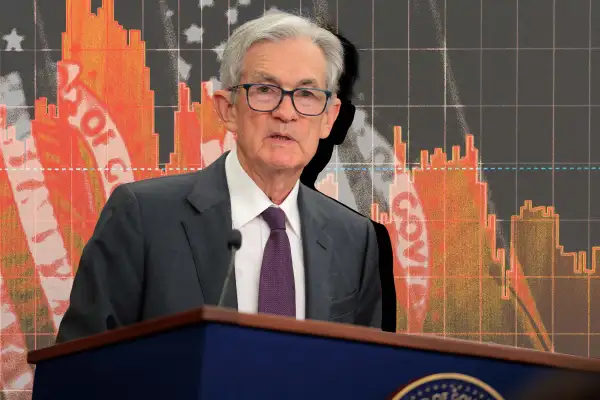Will the Fed Lower Rates in September? Experts Say Weak Jobs Report 'Cements' a Cut
Money is not a client of any investment adviser featured on this page. The information provided on this page is for educational purposes only and is not intended as investment advice. Money does not offer advisory services.

Market analysts have been searching for signs all year that indicate when the Federal Reserve might finally start lowering interest rates again.
The August jobs report just gave one of the clearest signs to date. The Department of Labor said on Friday that the economy added only 22,000 jobs last month, far below projections of around 75,000. The unemployment rate ticked up to 4.3%. The department also revised July's numbers down, showing the economy actually shed about 13,000 jobs, marking the first net loss since December 2020.
“The slowing labor market paves the way for an interest rate cut in September," Daniel Hornung, policy fellow at the Stanford Institute of Economic Policy Research, said in emailed commentary Friday.
Even before the latest jobs report, Fed Chair Jerome Powell suggested interest rate cuts could be imminent.
“With policy in restrictive territory, the baseline outlook and the shifting balance of risks may warrant adjusting our policy stance," Powell said during his final speech at the Fed's annual conference held in Jackson Hole, Wyoming, last month.
Will the Fed cut rates in September? Experts react
Following the jobs report, economists and analysts quickly reached a consensus that the Fed will cut rates at its September committee meeting — and possibly again before the end of the year.
"This report is supportive of additional and faster rate cuts beyond September," Jeff Schulze, head of economic and market strategy at ClearBridge Investments, said in commentary.
Similarly, Lara Castleton, the head of U.S. portfolio strategy at Janus Henderson Investors, said the August jobs report was "a miss" and that it ultimately "cements a Fed rate cut in September."
At his Jackson Hole speech last month, Powell highlighted the Fed’s so-called dual mandate, which stipulates maximum employment and stable prices for American families. He pointed to the weakening labor market as grounds for a potential policy shift but maintained that the unemployment rate remains at historically low levels.
At the same time, Powell said there are "clearly visible" signs that President Donald Trump’s tariffs are pushing up prices for consumers. A weakening labor market paired with rising prices muddles the Fed's dual mandate.
"The Fed faces a complicated picture beyond September, as tariffs continue to put downward pressure on the labor market at the same time that they create further upward pressure on prices," Hornung said.
According to the Budget Lab at Yale University, Trump's broad tariff policies are expected to cause inflation to rise by 1.7 percentage points, equating to a $2,300 increase on household budgets. However, a federal court recently ruled against most of Trump's trade policies, and the legal battle is likely to end up in the U.S. Supreme Court. If the challenged tariffs are ultimately struck down, the Budget Lab estimates remaining tariffs would increase prices by 0.5%, for an average household income loss of $700.
If the Fed were to leave interest rates where they are in an effort to tamp down on these price increases, it could result in further damage to the fragile job market.
How big could the rate cut be?
Historical rate changes suggest that 0.25 percentage point fluctuations are the standard. Cuts or increases to interest rates larger than that are typically in response to alarming economic data releases. For example, when pandemic-era inflation began picking up notably in 2022, the Fed delivered a series of 0.5 and 0.75 percentage point hikes.
The August jobs report may be one such alarming release.
Lately, baseline interest rates have been frozen in the 4.25-4.5% range. The Fed last cut rates in December 2024. Investors now unanimously expect a cut later this month to break the freeze. The question is now: How big?
According to CME FedWatch, a sizable share of investors are predicting a jumbo-sized 0.5 percentage point cut after seeing the August employment data.
Before the jobs report, no investors expected a jumbo rate cut, according to the tool. Following the release, 12% of them now anticipate that Fed will deliver a 50-basis-point reduction on Sept. 17.
More from Money:
We Asked AI Which Stocks to Buy in September. Here's What It Said






